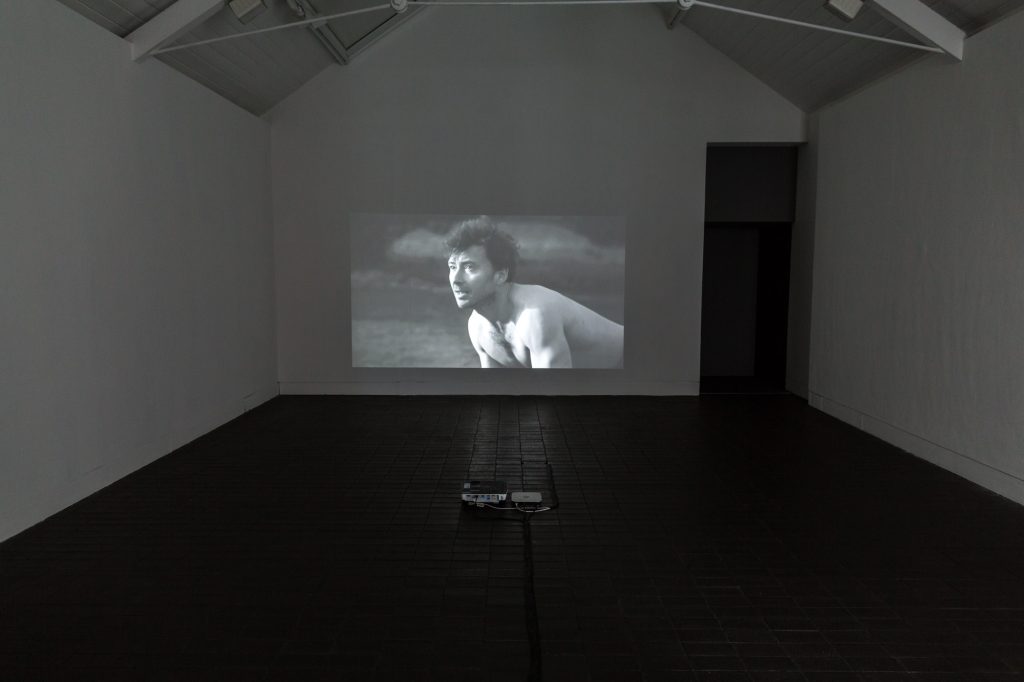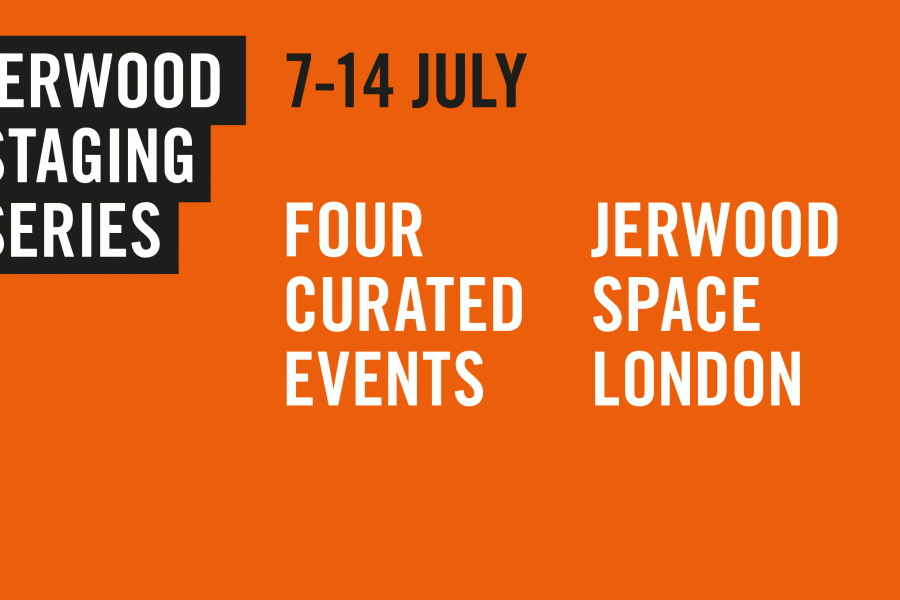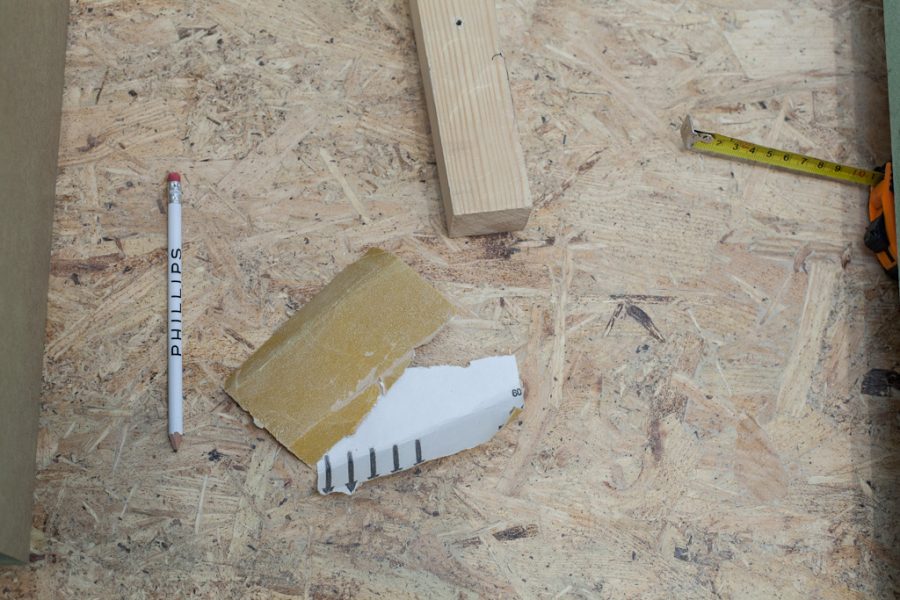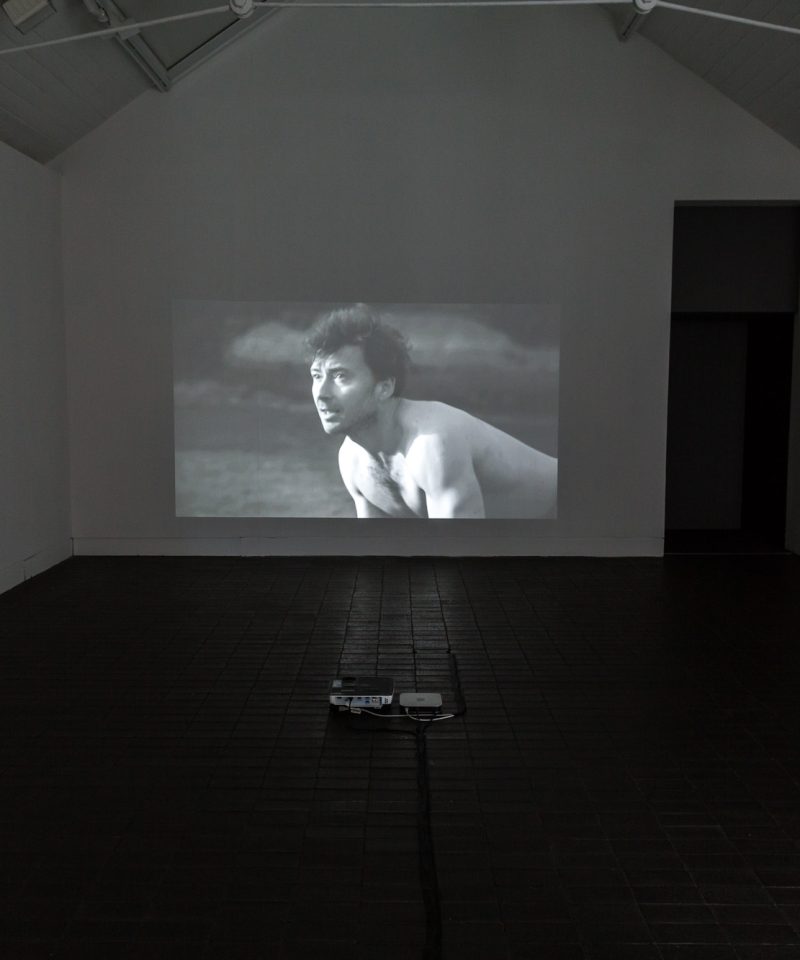moan
(is)
ing
the she of the
sea
un
der a who
a he a moon a
magic out
of the black this which of
one street leaps quick
squirmthicklying lu
minous night
mare som
e w
hereanynoevery
ing(danc)ing
wills&weres
– e e cummings, ‘moan… (7)’ from 50 Poems.
The new curatorial project, Jerwood Staging Series, took place in four editions from 7-14 July 2016. The programme was designed to provide a London platform for event-based presentations of work, including film screenings, performances, readings and discussion. Keira Greene’s expanded event on 14 July, Figuration of Place: many full less still, brought together two of her recent films (Totally on Fire and Grain) in dialogue with Manual, a performance choreographed by Siobhan Davies in conjunction with Helka Kaski and re-enacted on the night by Andrea Buckley. Keira Greene is an artist filmmaker; her work often focuses on the subjective experience of shared space. Greene made Totally on Fire in 2015 during her MA degree at the Royal College of Art. Grain, which was filmed at Anna Halprin’s Mountain Home Studio in San Francisco, was completed earlier this year. She is concurrently exhibiting in the Project Space until 27 August 2016. She kindly met with me at her studio in Brixton to reflect on the work and discuss the intersections with her wider practice and research interests.
Greene’s Project Space commission, titled Un-ion On-ion In-ion, is a small installation of sculptural and photographic works. The title is lifted from a text written by the founder and leader of an esoteric movement called The Emin, active between the 1970-90s. The text resonated with the way Greene had been thinking about language in relation to the esoteric; the delicate balance between mysticism and reason. She is sceptical of language; “I find it quite restrictive. e e cummings is one of my favourite poets. In some of his most fractured work, it’s just sounds and symbols coming up against each other”. His poetry also inflected her understanding of language’s different functions – used to explain, to discuss ideas, to set up intention. However, with cummings, “I don’t feel the need to pick it apart because it is deliberately dynamic”. The words ‘Un-ion, On-ion, In-ion’ are used to convey a relationship with the esoteric, or some form of arcane knowledge, but retain a gentle simplicity and playfulness. Two photographic works, Esalen Pool and Asha Centre are derived from Greene’s ongoing series High Beams. The series conjures the removed and enclosed quality of retreat centres. “With High Beams, I was interested in totemic objects, thinking about what objects can communicate within an environment about a set of ideas. I’m interested in why and what these totem objects represent, and how they’ve become part of a collective consciousness.” “Asha Centre captures a meditation space in a community near the New Forest”. Greene continues, “There were six cushions inside, not much else, maybe one print. It was in the English countryside and so it was cold. The space had this sense of temporality because it could only function depending on the conditions.” By focusing on the often uncanny nature of an architectural intervention in a rural landscape, an element of façade and temporality is underlined, signifying the real experience of being within an ideological space.
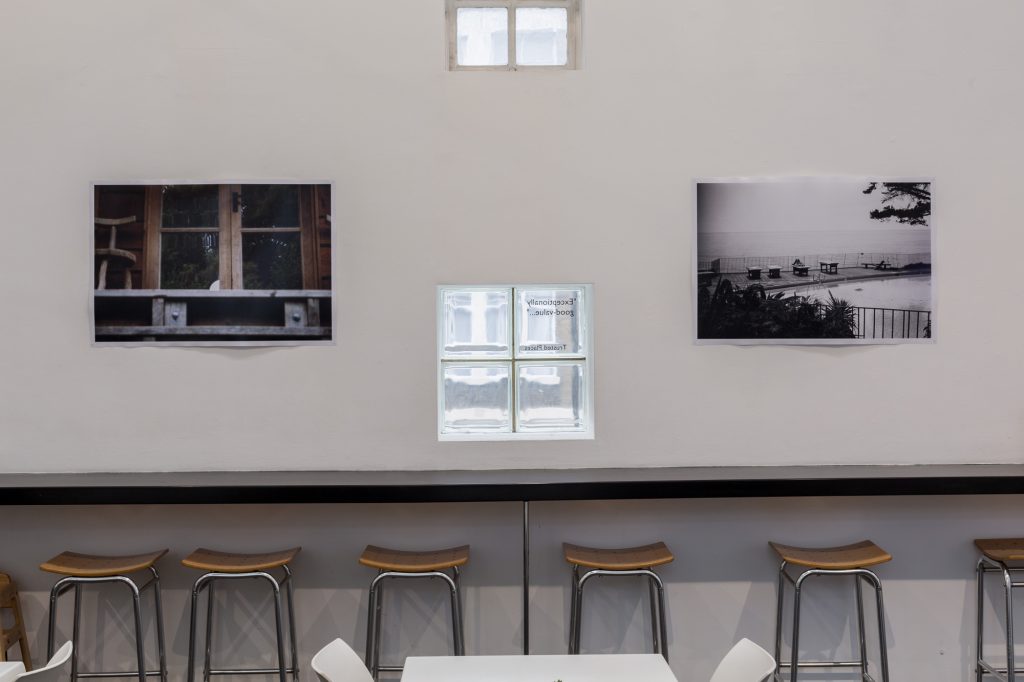

Some of the photographs in the High Beams series are taken at Braziers Park in Oxfordshire. Braziers Park is one of the oldest secular communities and residential colleges in the UK. Founded to explore ‘conscious co-existence’; “[they] endeavour to create a space which enables people to integrate both learning and teaching, and to find and develop their full potential in all aspects – intellectual, physical, emotional and spiritual.”[1] Braziers Park is also the setting for Totally on Fire. Due to this overlap, I ask Greene if she sometimes finds that the individual works feed into each other. Particularly after watching her two films brought together in the Jerwood Staging Series event, there was a strong sense that certain themes were being explored laterally as well as successively. “It’s difficult. They do start to build up a picture of an alternative lifestyle or way of living, but I am trying to be mindful that there are real complex things being explored by these separate spaces. I am respectful of that. I don’t want to make light of it. Akin to Anna [Halprin’s], the work they’re doing at Braziers Park is fantastic. I hope that there is an oscillation between the works but they’re not homogeneous”.
I enquire about the genesis of Totally on Fire. “It’s a long story,” Greene laughs. “I suppose it’s key to know that I’ve grown up with quite alternative parents. They weren’t counter-cultural but, for lack of a better word, they were hippies. My dad took a trip to California in the late 1970s to try and find someone. He found himself at the gates of the Esalen Institute on the cliffs of Big Sur, Highway 1. He came down a winding path and saw people on the lawn engaged in this strange act. When he got closer, he realised that they were all naked and playing a ball game, except with no net and no ball. He is an amazing storyteller. When I was younger, this story was always one I wanted to hear.” Years later, while studying at the Royal College of Art, “I was really interested in ideas of shared consciousness and shared perception. I was working with Chris Frith, a neuropsychologist at UCL. I was interviewing him without a really clear idea of where I was going. All of my work tends to involve a very long research process. I became interested in neuro-hermeneutics – thinking about what is happening on a scientific basis in order for us to literally share a perception of consciousness. These conversations made me think about how I could restage that Esalen game, as a game, so that people were sharing in the act of something that wasn’t there. They would have to learn how to trust one another and how to respond to one another in a really sensitive way. I started working with a drama therapist from Roehampton University, Matthew Trustman, and cast the actors. The actors then went through a series of trust workshops with him and a dance therapist. I wasn’t sure whether to get involved or not, but I decided just to witness it and take note. The group created a dynamic between them, like a shoal of fish. I was outside of that, which was quite odd. I was worried they were going to revolt! I wasn’t sure if I should fly them out to the original site in California, but eventually it felt more important that the context was similar but more informal. That’s why I chose Braziers, being already familiar with the space. We did one rehearsal, one unclothed rehearsal, and then went straight into the shoot. They aren’t choreographed; they are just playing”.
The film has an intimate and hypnotic quality. Just under six minutes long, it screens on a loop. Greene has deliberately obscured much of the story; “My research is hidden. No one would guess that I worked with a scientist and a therapist, or even that those people are actors”. She continues, “I deliberately edited out all the images of the house itself; it felt too specific. That’s why I ended up choosing black and white. It was too English when it was in colour.” I enquire about the importance of the research process and it’s, albeit concealed, relationship to the final work. Unlike more conceptual artists, where the research is the art and the final product is superfluous, Greene’s process is about confidence and care; “I don’t rush into things. I need conviction of each step. It also has to do with responsibility; I’m working with people and I feel a responsibility to be able to communicate what and why I want something from them.” This responsibility is palpable when thinking about the new film, Grain, where there is an individual, a family, and a legacy at stake – the Halprins.
Coincidentally, an interview with Anna Halprin by Ross Simonini was published in the most recent issue of Frieze (no 180). There are parallels between aspects of Greene’s film and the topics discussed by Halprin and Simonini, about movement, healing and improvisation:
“At the age of 95, the American dancer Anna Halprin continues to create new work, give weekly movement workshops and grant PhDs in the Life Art programme she developed at her Tamalpa Institute in Marin County, California. Along with her contemporary Merce Cunningham and her students Trisha Brown, Simone Forti and Yvonne Rainer, Halprin is one of the undeniable pioneers of avant-garde dance. Her radical improvisation and stubborn resistance to cohesive style has resulted in works as diverse as Circling the Mountain (1985) – in which she organized mass tribal dancing to protest murders in her community – and Dancing My Cancer (1975), a violent, costumed piece illustrating her use of movement to heal her own cancer. Since the 1960s, Halprin has documented many of her ideas in writing, including Dancing as a Healing Art (2000), a handbook of multimedia exercises to be used by art teachers, dancers and therapists. With her husband, the architect Lawrence Halprin, she developed a method of visual scoring for her work that recently led to the ongoing series ‘Scores about Nothing’, in which the subject of a dance can be as trivial as the zipping of a sweatshirt. She has spent a lifetime dismissing the boundaries between segregated disciplines (art, dance, medicine) and nationalities.”[2]
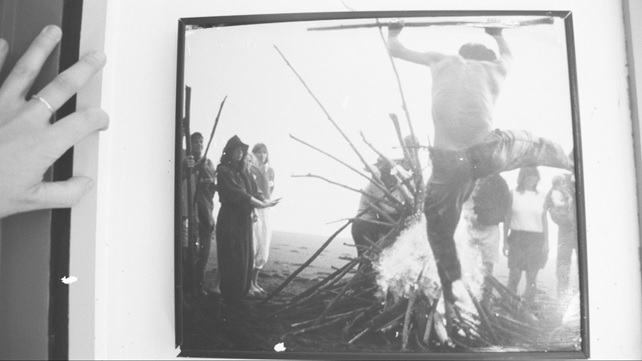
Two months after making Totally on Fire, having never been to California, Greene felt that it was time for her to visit. “I went to the Esalen Institute during a road trip to take a series of photographs. I’ve since exhibited Totally on Fire with photographs of the actual Esalen lawn. It was during conversations on that journey in California that people encouraged me to see Anna Halprin. On my return to London, I began more of a movement practice myself. I have a yoga practice but I started going to more obscure workshops. That reminded me of Anna and the way she developed her own physical language. I wrote to her three or four times. I sent her a copy of Totally on Fire. In the end I just phoned her up. She watched Totally on Fire while on the phone to me. It was amazing. My interest was in her practice but I was also interested in the work of her late husband, Lawrence. Anna felt that there hadn’t been a film about him. I also started communicating with Daria, her daughter, and ended up predominantly working with her. I had four days there. One was solely dedicated to interviewing Daria, then I had two days on my own roaming around in the forest, and on the last day I filmed Anna and Daria together, and recorded one of Anna’s workshops. There is a lot of footage that I didn’t include. I felt Daria’s personal history explained the environment better than footage from a workshop”.
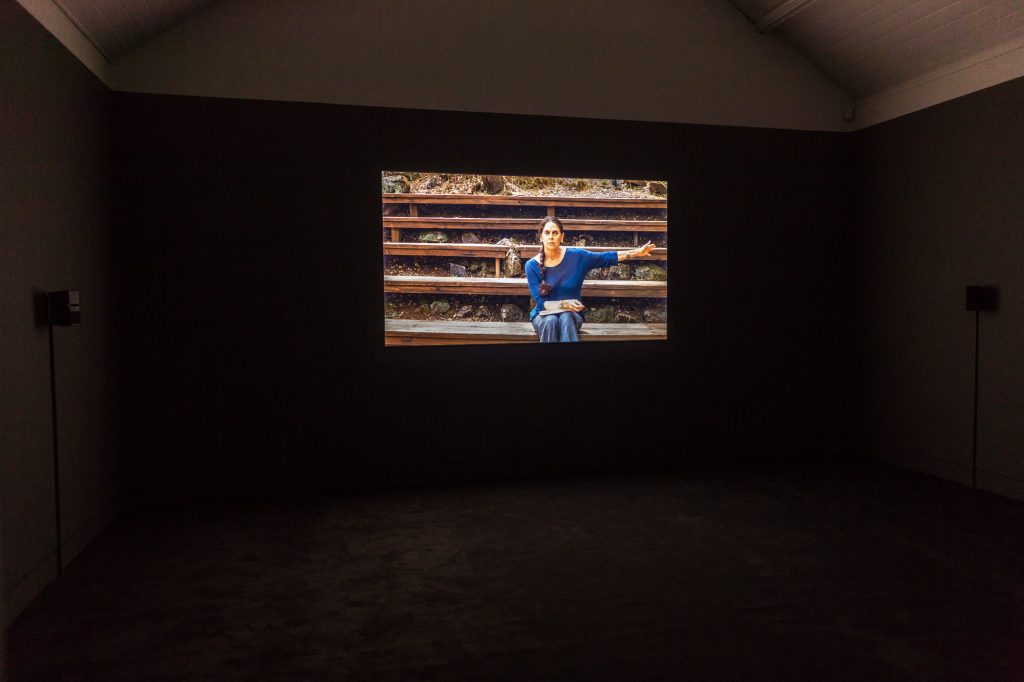
I had jotted down quotes from Daria’s voiceover while watching Grain at the Staging Series event – “the natural environment taught us about our own senses” / “I’ve danced in this environment since I could walk”. Thinking about the relationship between Daria and her upbringing, and with Greene’s inherited story about the Esalen still fresh, I asked if there was an ongoing interest in oral histories and generations. “I’m really interested in the idea of a voice over time and how that doesn’t have a fixed direction”, she commented. “Grain works on an unfixed temporal state; they’re talking about things that could be now or twenty years ago. There was an energy to how people were thinking and doing in that post-war, post-Fordism, countercultural time. The West Coast was a real melting pot of Eastern philosophy, Western psychology, psychedelics, and the environment. People were bringing things together in different configurations in a way that we just don’t do now. Some amazing cultural forms came out of that. I wanted to trace the voices that lived through that, thinking about where we are now, and what experimentation looks like now. The idea of ‘subculture’, the idea of things being ‘sub’ at all, have really shifted. Can we even have subculture now? It is consumed so quickly. The call to arms to create an alternative space now would probably happen through a more formalised process.” We muse about the easy blurring between daily life and artistic practice when the forces of capitalism are removed; thinking about how alternative ways of living provide an opportunity for one’s life to be one’s work. Greene expands, “it was a really rich time for people thinking about interdisciplinary practice, which of course isn’t avant-garde at all anymore. People were looking to one another to find a real divergence from current ways of life.” In a way, this mirrors Greene’s own work, with the use of neuropsychologists or therapists behind the scenes. “There is only so much you can get from an art education. Similar to the Esalen, or at Anna’s, the art becomes a great vehicle in order to learn from other people”.
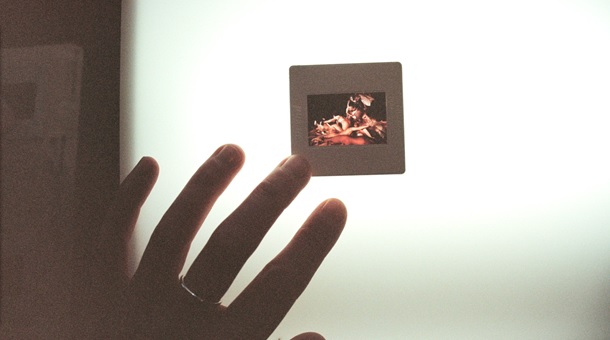
Anna Halprin comments in her Frieze interview with Simonini that “what’s so exciting to me about dance [is that] our bodies are an instrument and, because of that, we become multi-dimensional artists”. The element of multi-dimensionality fed into Greene’s event for the Jerwood Staging Series, the two films concurrently screening while Andrea Buckley re-enacted a performance in the next room. “I’ve only recently realised how much dance is being repeated in my work, it’s not a conscious thing. I don’t have a research interest in dance per se. I’ve entered into it by thinking about gesture and the way psychological affect is delivered through the screen”. Greene’s incorporation of ‘Manual’ came through a specific desire to create a physical dialogue in Jerwood Space. By choosing Siobhan Davies, parallels were drawn between innovative female dancers and choreographers who are continually shaping the field of dance and art. “The sort of performance I am drawn to is one of an embodied experience, and how one is implicated in that. Siobhan Davies has also done an extensive period of research into consciousness science, focusing on neuroscience and behaviour, especially of communication. She suggested ‘Manual’ based on that meeting of interests. Our conversation was around ideas of intimacy and touch. Siobhan has a very different approach to, and is reticent about, the word ‘embodied practice’. That was interesting because Anna and Daria [Halprin] use it a lot”. Greene explains these parallels more explicitly in a document she emailed me before our meeting – “Both Totally on Fire and Grain deal with themes around being ‘in contact’ with others. ‘Manual’ is a direct engagement of this idea in the space of the gallery. The immediacy of ‘Manual’ makes tangible how being in contact with someone else simultaneously looks back at our development of communicating, but also looks forward at the limits that we can keep pushing of being (and working) together. ‘Manual’ reflects principles in the work of Anna Halprin; it breaks habits of movement whilst empowering movement and communication. ‘Manual’ and the two films share a language which looks to sculpt the immaterial and personal space of human experience and exchange.”
“Manual demonstrates how we are all experts in the movements which make up our daily lives. Originally presented in the grand, neo-classical ground floor gallery at the Gallery of Modern Art Glasgow (GoMA), in June 2013, Manual responded to the theme of GoMA’s exhibition Every Day. The work draws attention to simple movements, meticulously dismantling their timing and order to encourage us to notice how we orchestrate actions. Kaski invites audience members to help her carry out a familiar action by giving her a series of verbal instructions. Through this conversation, it becomes clear that what at first may appear easy is actually complex and extraordinary, often resulting in an unexpected dialogue”.[3]
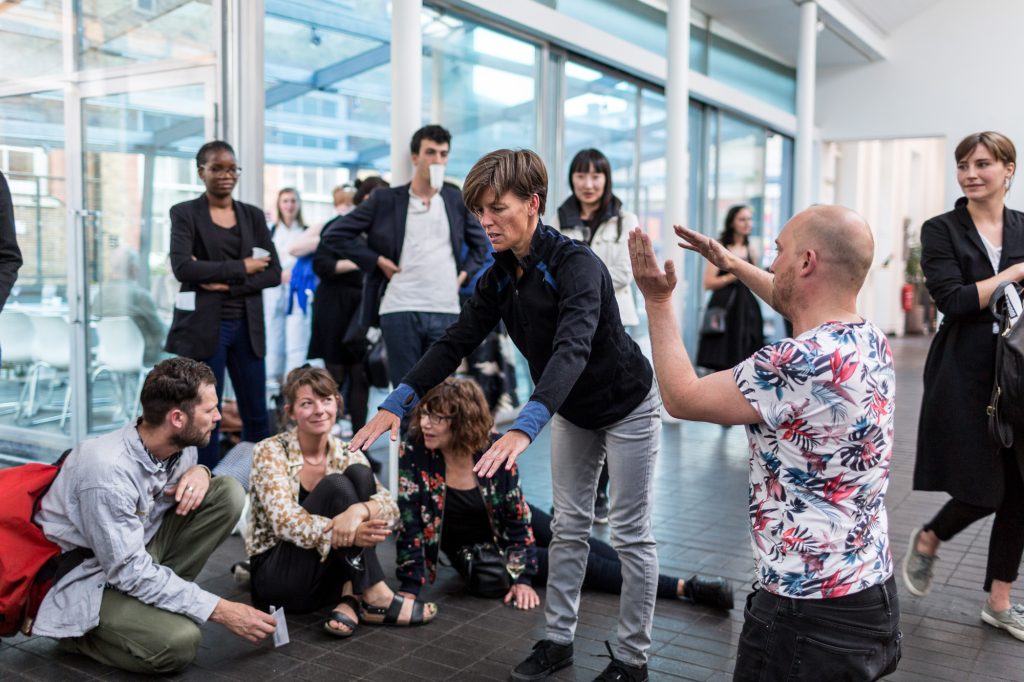
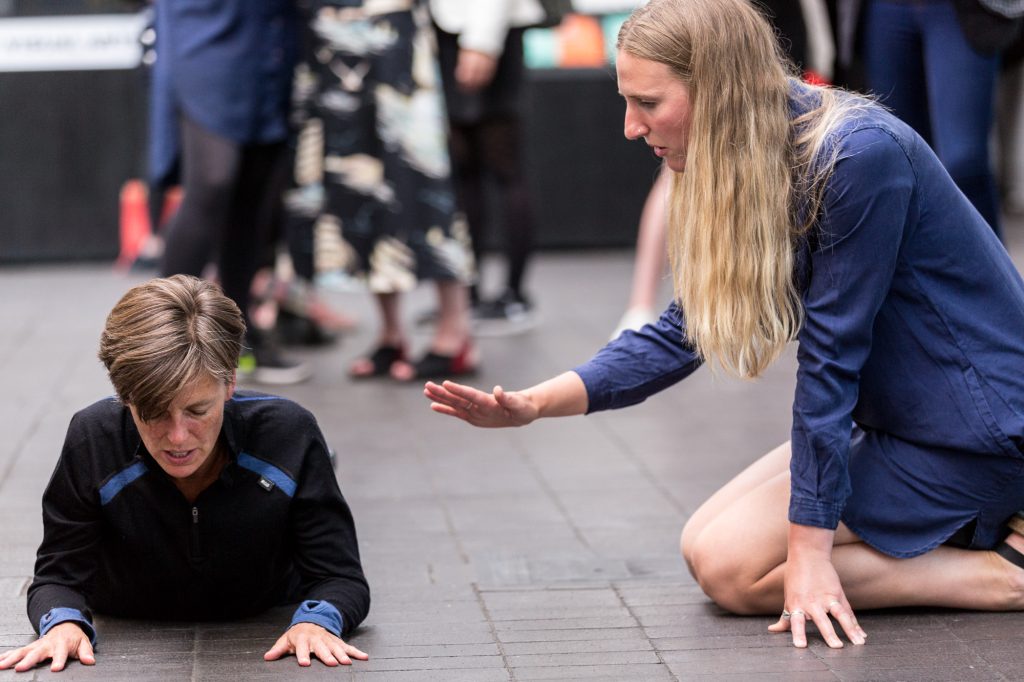
I expressed to Greene that I found the evening itself functioned as an experimental temporal happening, perhaps due to the intimacy of the Manual intervention. I wonder about the increasing popularity of live performance or time-based events worldwide. “I think people are seeking ways to commune, come up against one another and reintegrate. Society is becoming so much about the remote experience of the individual”, she replies. “‘Manual is quite an existential solo experience but it is also about care, and the time it takes to care for someone. It’s porous; you don’t have to step into a role. It’s challenging but it’s not confrontational.” There was an intimate relationship between members of audience, feeling like participants rather than observers. The institution functioned as a pedagogic backdrop, an alternative space in which one could explore the nuances of the individual works. “The institution was really highlighted by the way that people were behaving; the behaviour was influenced by the works,” responded Greene. “I couldn’t ask for more than that really. People were choosing to stay sat on the floor after performances had finished. There was a totally different engagement with the environment”. Jerwood Space itself is an interesting environment. Although ostensibly a white cube space, it has more unusual quirks and features – tiled floors, skylights, and a conservatory. The addition of the Project Space also added another dimension, there was something to explore in each part of the building. Greene explains, “The work in the Project Space is deliberately very fragmented. Everything works individually as symbolic entities. The sundial and the wave, and the images to a degree, are referencing ideas around form. It’s appropriate then that the form of Andrea’s body was shifting near that space. I like the relationship of walking from the performance, through Totally on Fire, to get to Grain. By the last point everyone is sitting together in an enclosed space.” Greene positions herself as simultaneous immersed subject and objective spectator. “I’m more interested in work where I feel like I can move around in it, rather than creating a didactic message”.
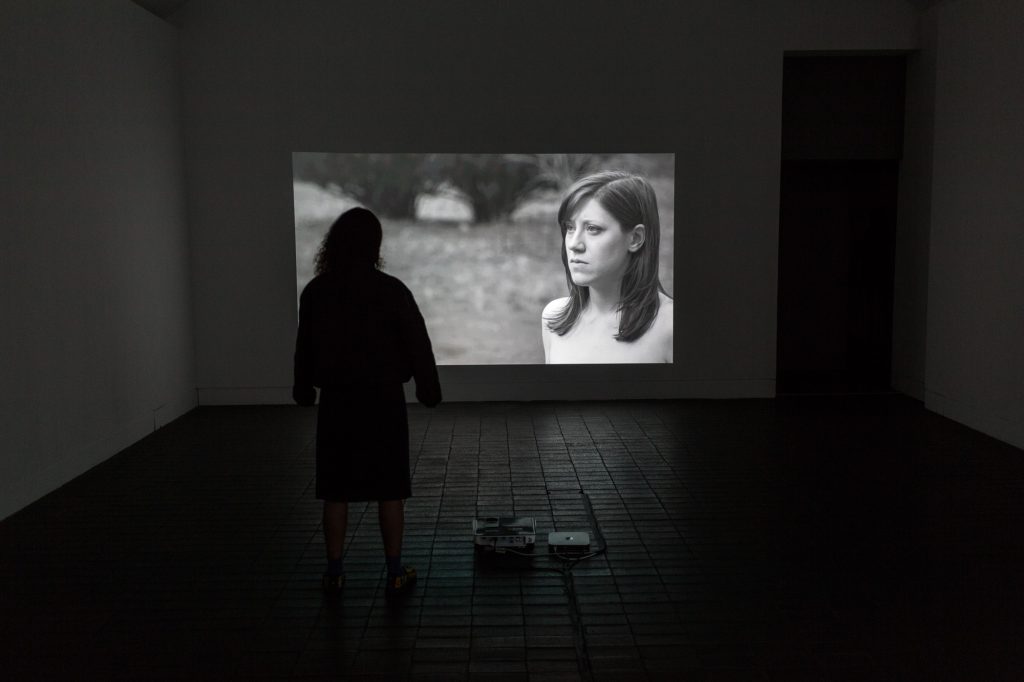
there is a here and
that here was a
town(and the town is
so aged the ocean
wanders the streets are so
ancient the houses enter the
people are so feeble the feeble go to
sleep if the people sit down)
and this light is so dark the mountains
grow up from
the sky is so near the earth does not
open her
eyes(but the
feeble are people the feeble
are so wise the people
remember being born)
when and
if nothing disappears they
will disappear always who are filled
with never are more than
more is are mostly
almost are feebler than feeble are
fable who are less than these are least is who
are am(beyond when behind where under
un)
– e e cummings, ‘there is a here and… (19)’ from 50 Poems.
[1] Taken from the homepage of the Braziers Park website, www.braziers.org.uk
[2] Ross Simonini, ‘All Things Connect’, Frieze Magazine, no 180, June 2016
[3] Siobhan Davies Dance, Manual, www.siobhandavies.com/work/manual
Image 1: Keira Greene, Un-ion On-ion In-ion, 2016. Installation view at Project Space. Photo: Hydar Dewachi.
Image 2: Keira Greene, Un-ion On-ion In-ion, 2016. Installation view at Project Space. Photo: Hydar Dewachi.
Image 3: Keira Greene, Grain, 2016. Still. Image courtesy the artist.
Image 4: Keira Greene, Grain (2016). Screened as part of Figuration of Place: many full less still, an evening of screenings by Keira Greene and performance by Siobhan Davies (July 2016); one of four Jerwood Staging Series events, supported by Jerwood Charitable Foundation. Image: Hydar Dewachi
Image 5: Keira Greene, Grain, 2016. Still. Image courtesy the artist.
Image 6: Manual, a performance by Siobhan Davies and Helka Kaski, activated by Andrea Buckley. Performed as part of Figuration of Place: many full less still, an evening of screenings by Keira Greene and performance by Siobhan Davies (July 2016); one of four Jerwood Staging Series events, supported by Jerwood Charitable Foundation. Image: Hydar Dewachi
Image 7: Manual, a performance by Siobhan Davies and Helka Kaski, activated by Andrea Buckley. Performed as part of Figuration of Place: many full less still, an evening of screenings by Keira Greene and performance by Siobhan Davies (July 2016); one of four Jerwood Staging Series events, supported by Jerwood Charitable Foundation. Image: Hydar Dewachi
Image 8: Keira Greene, Totally On Fire (2015). Screened as part of Figuration of Place: many full less still, an evening of screenings by Keira Greene and performance by Siobhan Davies (July 2016); one of four Jerwood Staging Series events, supported by Jerwood Charitable Foundation. Image: Hydar Dewachi
